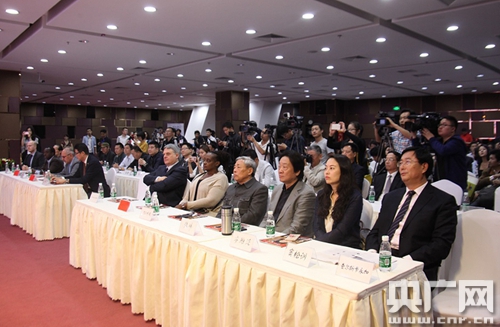RMB Internationalization Has Taken Important Steps! Two Recent Major Financial Developments Have Attracted Attention
RMB Internationalization Has Taken Important Steps! Two Recent Major Financial Developments Have Attracted Attention
From September 7 to 8, the People's Bank of China renewed the bilateral local currency swap agreement with the European Central Bank, the Swiss National Bank and the Hungarian Central Bank, with a total scale of RMB 540 billion.
Recently, two important news in the financial field have attracted widespread market attention: On September 11, the People's Bank of China and the Bank of Indonesia officially launched a bilateral local currency settlement cooperation framework and simultaneously realized the interconnection of the QR code payment system; and from September 7 to 8, the People's Bank of China renewed bilateral local currency swap agreements with the European Central Bank, the Swiss National Bank, and the Central Bank of Hungary, with a total scale of RMB 540 billion.

The successive developments have aroused repercussions in public opinion: Does this mean that the RMB is challenging the international status of the US dollar? In this regard, well-known economist Huang Qifan gave a rational response: "Whether a currency can become a world currency depends on the objective needs of world economic development. Although the RMB is being accepted by more and more economies and market entities, we must not think that the RMB will replace the global status of the US dollar."
(one)
What is a “domestic currency swap”? Its essence is not complicated.
It can be vividly understood as the central banks of two countries or regions opening a "currency credit card" for each other. The two parties agree on the exchange rate and quota in advance. When necessary, domestic enterprises can "withdraw" local currency from the other party's central bank according to the agreed ratio, and then exchange it back to the local currency and pay corresponding interest after maturity. If the limit has not been used, no debt will be incurred, just as ordinary people will not owe money if they do not consume after applying for a credit card.
For enterprises, local currency swaps can be called a "save-saving tool." In the past, when Chinese companies conducted business overseas, if the counterparty did not accept RMB, the company had to first convert RMB into U.S. dollars and then convert U.S. dollars into local currency. Two exchanges not only face the risk of exchange rate fluctuations, but may also eat into corporate profits and generate additional handling fees. With local currency swap as an institutional guarantee, cross-border settlement for enterprises is more convenient and cost-effective.
This mechanism is essentially an important innovation in “de-dollarization” in international trade. In the future, if it is further expanded into the fields of bulk commodities such as oil and iron ore, and priced and settled in RMB, trade convenience will be significantly improved.
As of May 31, 2023, the People's Bank of China has signed bilateral local currency swap agreements with central banks or monetary authorities in 32 countries and regions around the world. On June 18, Zhu Hexin, deputy governor of the People's Bank of China and director of the State Administration of Foreign Exchange, publicly stated that in the future, the foreign exchange hedging ratio of enterprises and the ratio of cross-border RMB receipts and payments for trade in goods will be increased to about 30%.
It can be said that the essence of China's establishment of currency swap systems with multiple partners is to install "anti-slip chains" for international trade, which not only provides convenience for enterprises, but also adds a barrier to financial stability.

(two)
Why does China actively promote currency swaps?
To answer this question, we need to first clarify a paradox: Why does the United States, as a country that has overdrafted the global economy for a long time, still maintain a strong currency?
The key is not the value of the U.S. dollar itself, but that the most important international commodities and assets are generally priced in U.S. dollars. Any country that wants to participate in global trade and investment must first obtain U.S. dollars.
This mechanism has restricted the development autonomy of many countries to a certain extent and even affected their monetary sovereignty.
In order to maintain exchange rate stability, the People's Bank of China has to continue to purchase U.S. dollar assets. Once the Federal Reserve implements quantitative easing policy, China will also need to passively adjust liquidity. A slight mistake may trigger asset price bubbles.
Pan Yingli, a professor at Shanghai Jiao Tong University's Antai School of Economics and Management, pointed out that before 2014, RMB issuance mainly relied on foreign exchange funds - that is, by purchasing US dollar assets and investing in RMB, which was essentially the issuance of local currency anchored by the US dollar. The outbreak of the financial crisis in 2008 put my country's foreign exchange reserves, dominated by US dollars, at serious risk of depreciation. Since then, the internationalization of the RMB has been put on the urgent agenda.
Therefore, a core task of RMB internationalization is to promote international commodities and high-quality assets to be priced in RMB. Promoting bilateral local currency swap agreements is one of the most practical paths at this stage.
Data show that the RMB internationalization index in 2023 is only 3.26, far lower than the US dollar's 57.68 and the euro's 22.27, and the gap is still significant.

(three)
So how to pragmatically promote the internationalization of the RMB?
Huang Qifan put forward specific goals: by 2035, the proportion of China's trade in goods settled in RMB should strive to reach 45%, and the proportion of global payments in RMB should increase to 17%. He suggested that countries along the “Belt and Road” could be started to promote the widespread use of RMB in investment and trade, while building a smooth “return channel” of RMB, and ultimately forming a healthy and sustainable two-way circulation mechanism of RMB.
But objectively speaking, it is still unrealistic to talk about the RMB replacing the US dollar as the "world currency". China currently faces two major practical constraints:
First, China has maintained a long-term trade surplus. The first step in currency internationalization is to let the local currency “go global.” In the past, we "earned dollars and spent dollars", but if we switch to exporting renminbi, it means printing more renminbi to purchase goods and services overseas. This approach may impact the domestic manufacturing industry - the hollowing out of American industry is a lesson learned from the past. China, whose country is founded on manufacturing, cannot repeat the same mistakes.
Second, capital account controls still exist. For a country's currency to become an international reserve currency, the basic prerequisite is to achieve capital account convertibility - of course this should be a gradual and controllable process. Each stage of RMB internationalization requires supporting capital account opening policies as support. At present, we are still lacking in system construction and market depth, and we still need to consolidate the foundation through deepening reforms and continuous accumulation.
The central government remains highly alert to this issue. The "14th Five-Year Plan for National Economic and Social Development of the People's Republic of China and the Outline of Long-term Goals for 2035" clearly states: "Promote the internationalization of the RMB steadily and prudently, adhere to market-driven and independent choices of enterprises, and create a new mutually beneficial cooperative relationship based on the free use of RMB." The word "prudent" highlights a rational and pragmatic attitude. In the long term, the goal of RMB internationalization is not to compete for currency hegemony, but to promote a smoother global economic and trade cycle.

As Huang Qifan said: "Promoting the internationalization of the RMB is not to replace the US dollar, but to match the international status of the RMB with the proportion of China's economy in the world."





